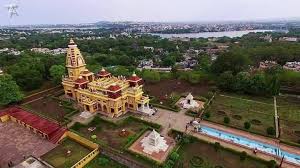In the quiet expanse of Badebanjora village, what once began as a modest initiative under the Mahatma Gandhi National Rural Employment Guarantee Act (MGNREGA) has gradually transformed into an instrument of rural empowerment. The village’s dabris, small agricultural ponds carved out under the scheme, are now shimmering symbols of self-reliance, nurturing not only water security but also new streams of livelihood.
Recently, two farmers, Lachhuram Koram and Mayaram Poyam, were each provided with 500 grams of shrimp seed by the Department of Fisheries, marking a decisive step in expanding the scope of rural income beyond the furrows of farmland. This initiative, modest in scale but monumental in meaning, seeks to fuse traditional agriculture with aquaculture, turning sun-drenched ponds into fertile grounds of economic renewal.
For long, the rural economy has been tethered to the seasonal uncertainties of monsoons and crop cycles. The dabris, however, are rewriting this dependence by converting conserved water into capital, liquid assets that can sustain social and financial stability. The department’s recognition that shrimp farming could serve as a low input, high yield venture reveals a commendable foresight, as basic technical guidance on water quality control, feed management, and pond maintenance can help villagers transform these water bodies into enduring engines of income.
Beyond the figures and the framework lies a deeper narrative, the reimagining of rural development as a confluence of ecological balance and economic viability. When policy aligns with local knowledge and community initiative, projects like these transcend their administrative origins to become blueprints of resilience. Every drop conserved, every seed sown, and every shrimp nurtured reflects a slow but certain shift, from dependence to dignity.
In an era when rural distress often dominates the discourse, Badebanjora’s humble ponds stand as quiet testaments to the promise of integrated livelihoods. They affirm that sustainability in India’s villages will not come solely from schemes and subsidies, but from the symbiosis of water, work, and willpower.




